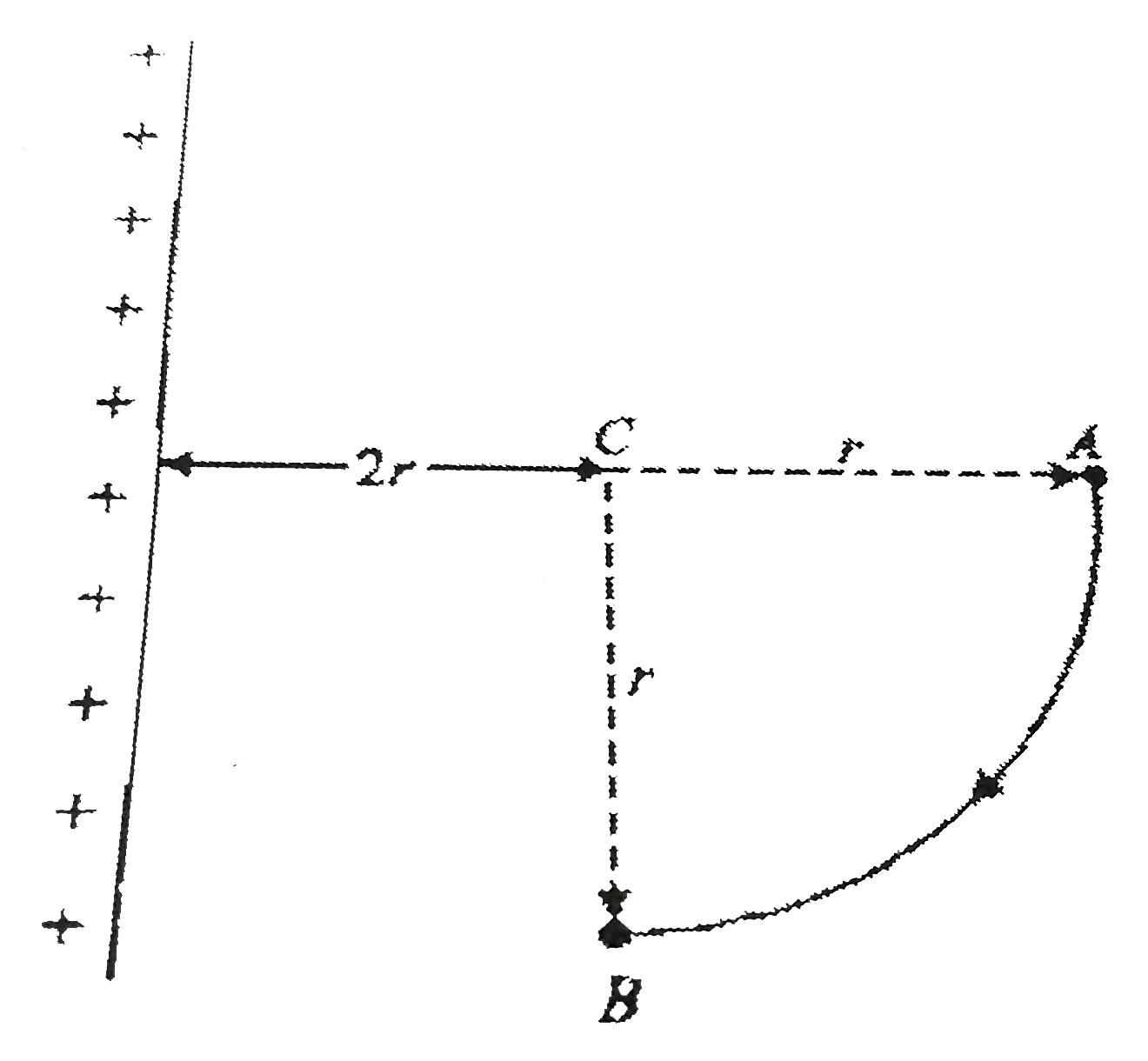If a point charge +q is taken first from A to C, and then from C to B of a circle drawn with another point charge +q at the center (Fig) then along which path more work will be done ?

As charge +q is at the center of the circle, therefore,
V=VB If VC is potential of point C, then
VC−VA=VC−VB
WAC=q(VC−VA)
WCB=q(VB−VC)=−q(VC−VB)
=−q(VC−VA)
∴ Numbercally, WAC=WCB
Similar Questions
Knowledge Check
The work done in carrying a charge Q1 once round a circle of radius R with a charge Q2 at the centre is
AQ1Q24π∈0R2BzeroCQ1Q24π∈0RDinfiniteA point charge Q is moved along a ciruclar path around another fixed point charge. The work done is zero
Aonly if Q returns to its starting pointBonly if the twoi charges have the same magnitudeConly if the two charges have the same magnitude and opposite signsDin all caseAs per this diagram a point charge +q is placed at the origin O. Work done in taking another point charge −Q from the point A(0,a) to another point B(a,0) along the staight path AB is:
 A(−qQ4πε01a2)√2aBzeroC(qQ4πε01a2)1√2D(qQ4πε01a2)1√2a
A(−qQ4πε01a2)√2aBzeroC(qQ4πε01a2)1√2D(qQ4πε01a2)1√2a
a. A circle is drawn with center as a charge +q. What is the work done in moving a charge +q from B to C along the circumferebce of the circle ?
B In the above question, if the charge +q is first taken from B to A and then from A to C, on which path is the magnitude of work greater ?
 .
.
View SolutionA charge q0 is transported from point A to B along the arc AB with centre at C as shown in figure near a long charged wire with linear density A. lying in the same plane. Find the work done in doing so.

View SolutionA point charge is taken from a pint A to a pint B in an electric field. Does the work done by the electric field depend on the path of the charge ?
View SolutionAssertion(A): A point charge q is rotated along a circle around another point charge Q .The work done by electric field on the field on the rotating charge in half revolution is zero.
Reason (R ) :No work is done to move a charge on an equipotential line or surface.
View SolutionThe work done in carrying a charge q once around a circle of radius r with a charge Q placed at the centre centre will be
View Solution
